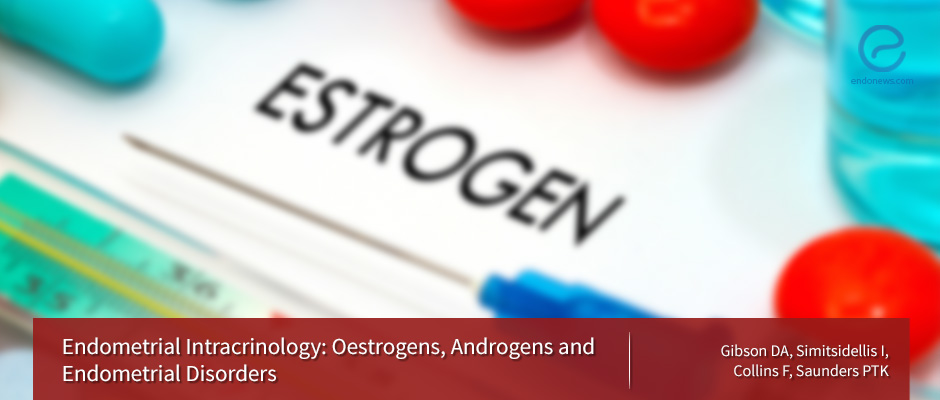Drugs targeting estrogen biosynthesis opening up new approaches to the treatment of endometriosis.
Dec 6, 2018
Intracrinology occurring in endometrial tissue as steroidal metabolism may lead endometriosis.
Key Points
Highlights:
- Intracrinology is the study of intracellular actions, regulation, trafficking, and interactions of extracellular signaling peptides/proteins.
- Endometrium as a nongonadal tissue can synthesize estrogens and androgens from inactive steroids present in the blood to respond to local physiological demands that prove intracrinology.
Importance:
- New therapeutic approaches for the treatment of endometrial disorders based on intracrine targets are research topic nowadays.
What's done here:
- Authors penned a wide range of information on the endometrial tissue metabolism of steroids, and indicate the evidence for the importance of intracrinology in endometrial disorders such as endometriosis and endometrial cancer according to the recently published articles.
Key Results:
- Although the endometrium was considered a target for endocrine hormones, last studies proved the important role of endometrial cells on intracrine steroid biosynthesis and metabolism regulating the normal endometrial function and fertility
- Biosynthesis of active steroids within the endometrium was known to be a feature of endometrial disorders such as endometrioma and endometrial cancer.
- The identification of aromatase expression and production of estrogens highlighted the importance of locally produced androgens acting as precursor steroids for estrogen biosynthesis.
- Manipulation of intracrine sex steroids metabolism has emerged as a therapeutic target for the treatment of endometriosis and endometrial cancer.
Lay Summary
Gibson et al., from the Univerity of Edinburgh, UK, take over a new interest about endometriosis occurrence and progress by endometrial tissue intracrinology in their recently online published article in International Journal of Molecular Sciences. The authors summarize the last decade improvements about intracrinology and the role in endometriosis as well as endometrium cancer dividing into sections.
The ability of cells within non-gonadal tissues to both produce a hormone and to respond to that same product can be defined as "intracrine". Recent studies are providing evidence for changes in tissue-specific concentrations of steroids, that did not necessarily parallel those in blood. İncresing use of liquid chromatography-tandem mass spectrometry in research led to clarify the expression of enzymes that play a role in the activation and inactivation of bioactive estrogens and androgens as well as expression of hormone receptors in the endometrium.
The locally produced (intracrine) steroids could play a role in etiologic pathogenesis of breast and endometrium cancer as well as in regulation of fertility, and also etiology of estrogen-dependent disorders like endometriosis.
The most important precursor of androgen is inactive adrenal steroid DHEAS in women. The main estrogen production comes from the conversion of androgens such as A4 and T to active estrogens E1 and E2 respectively, via the action of the aromatase enzyme. Expression of aromatase enzyme in endometrial tissue is the key to affiliate intracrine procedure.
When the patterns of expression of receptor proteins in normal endometrium compared with samples of endometriosis and endometrial cancer, the results revealed aberrant expression of both androgen receptors and estrogen receptors; which indicates intracrine activation/metabolism in endometrium. These inventions may conduct the researchers to treat a range of disorders including infertility with supplementations of inactive steroids or administration of drugs targeting intracrine steroid biosynthesis.
Further studies are needed to better define the role of intracrine in endometrial disorders and the interplay between metabolic and inflammatory processes.
Research Source: https://www.ncbi.nlm.nih.gov/pubmed/30360364
estrogene androgene endometrial tissue intracrine dehydroepiandrosterone (DHEA) aromatase endometriosis endometrial cancer sulfatase

